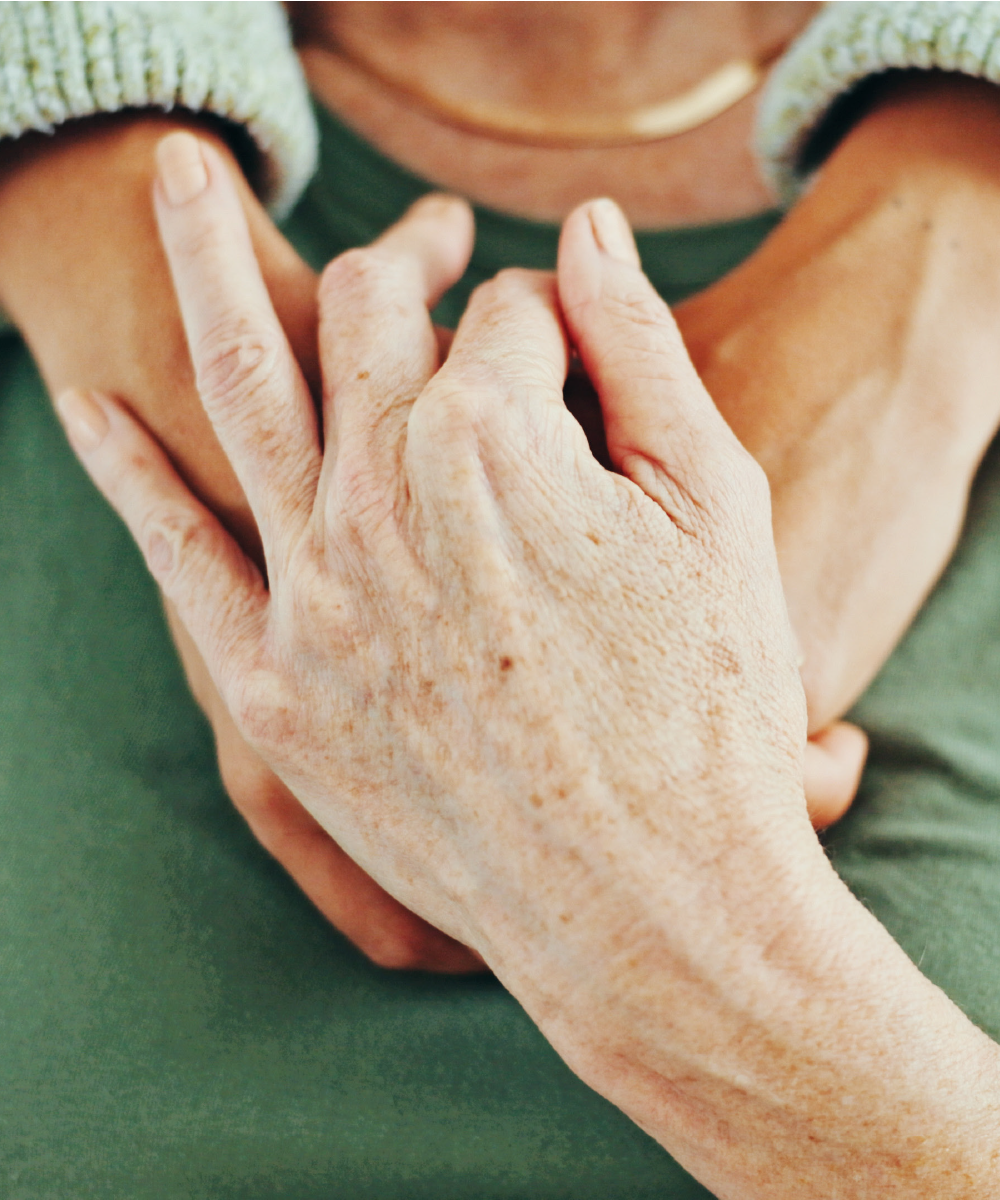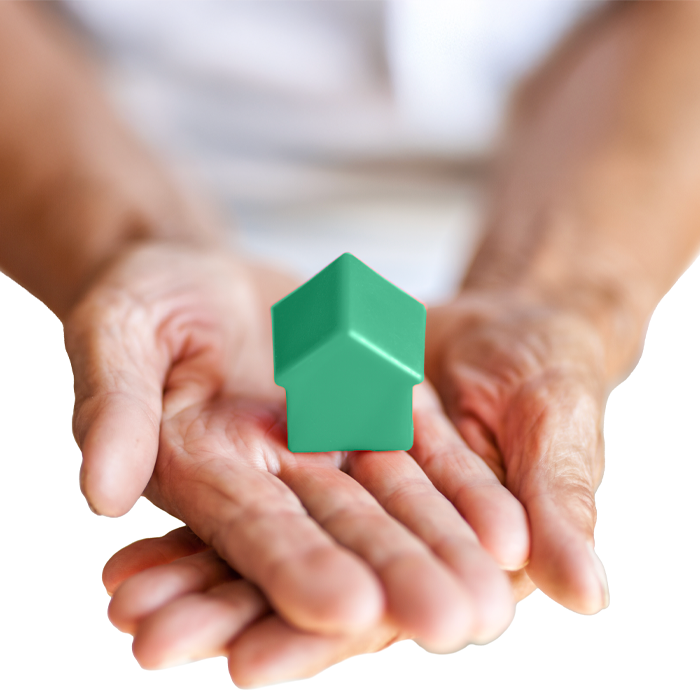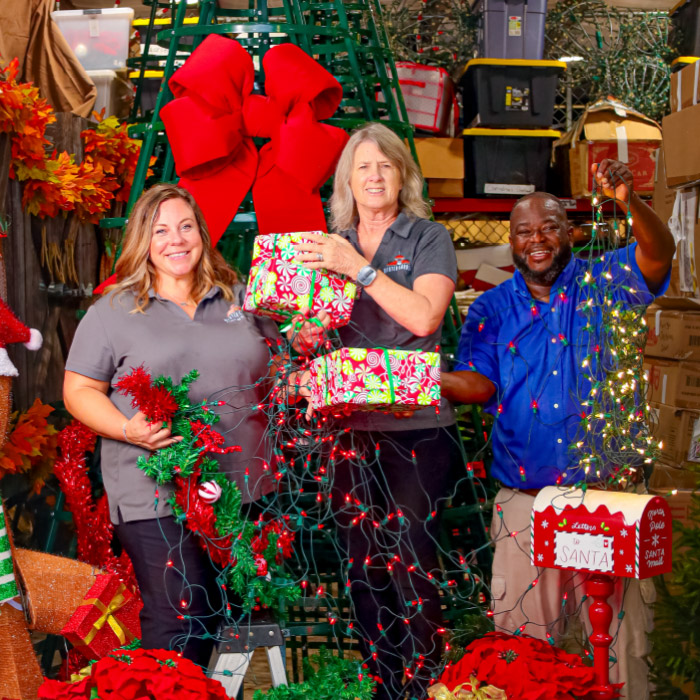
Becca Lanterman Bradford’s father used to swear he’d die in his recliner. “Right here,” he’d say, smacking the armrest. “They can bury me in this chair.” It was half a joke, half a promise, and wholly the kind of thing the family laughed off—until they couldn’t. Because the truth is, most aging parents don’t want to leave their homes.
“I just looked it up this morning to make sure,” says Becca, a senior-home-care expert who has spent years helping seniors stay put safely. “Seventy-five percent of people over 50, and 85% over 65, want to remain in their homes. The problem is, no one talks about it. No one talks about how to make that happen.”
And it’s understandable. Who wants to sit across from their aging parents and say, Hey, let’s make a plan for when you can’t drive, or get up the stairs, or make it to the bathroom alone? It feels like admitting defeat, as if talking about it will somehow speed up the decline.
But Becca is firm on this point: The hard questions have to be asked.
“The Silent Generation—those World War II and Korean War guys—they’re not talking about what they want or need. And Boomers, the ones in their 60s and 70s? They are a little better, but not much. No one really wants to talk about aging. So the truth is, it’s going to fall on the kids to ask, because we’re the ones who are going to see it.”
How do you know when it’s time to have the conversation?
“It’s never too soon,” Becca says. “If you are an adult in your 30s or 40s, and your parents are in their 50s or 60s, start talking about aging now. Make it a part of regular conversation. That way, when symptoms start showing up, you’re prepared.”
The signs are almost always subtle at first. The dishes pile up. Doctor’s appointments get missed. A sudden fear of falling appears, which, as Becca warns, “can totally restrict their life. If they’re afraid, they stop moving. And when they stop moving, they get isolated. And then—atrophy, weight changes, depression. It all snowballs.”
She says the signs can take many forms. A father who no longer tinkers in the garage. A mother who once quilted with her church group every Thursday but started skipping, then stopped going entirely. They’re not reading any more, or they’re reading too much and not being active. That’s a red flag.
“Ask specific questions: ‘Where did you go today? Who did you see?’ Patterns tell a story. If they used to have something they loved and suddenly they’re not doing it anymore, there’s a real reason for that,” she explains.
It’s easy to ignore the signs. Easier to tell ourselves everything’s fine, that they’re just tired or don’t feel like going out. But ignoring it doesn’t make it go away. And when families don’t address these issues early, they end up calling Becca’s company, Winter Garden Senior Home Care, in crisis.
“We get those calls all the time,” she says. “Mom’s just out of the hospital, Dad’s in over his head, the house isn’t safe, nobody has a plan, and now everyone is panicking.”
Safety First
Most people assume making a home safer means grab bars in the shower and maybe one of those “I’ve fallen and I can’t get up” buttons. But Becca shakes her head.
“That’s the bare minimum. There are dozens of other hazards: slippery floors, ornate rugs, changing surfaces, shelves that require step stools, loose railings. And I hate to say this because I have little dogs and I love them, but small dogs are a trip hazard.”
And steps. Even tiny ones. “I walk up to houses and immediately see danger zones. That one-inch lip where the flooring changes? That’s a broken hip waiting to happen. And hip fractures in seniors? They can be catastrophic.”
Then there’s food. “Look in the fridge,” she says. “If it’s full of Banquet meals and canned soup, that’s a problem. Sodium is through the roof in those, and it just makes chronic conditions worse. Expired yogurt, also a health risk. We’ve had families move their parents into assisted living just for the meals.”
If cooking is still an option, grocery delivery can be a game changer. “A lot of my clients’ kids live out of state, so they use a meal delivery service or Kroger grocery delivery. That way, they know their parents have fresh food.”
The knee-jerk solution when a parent can’t live alone is often, Well, we’ll just move them in with us. It’s a loving instinct, but Becca has seen it backfire more times than she can count.
“There’s unspoken trauma in those dynamics,” she says. “We love our parents, but when they start declining—especially cognitively—it can be triggering for everyone. If you don’t have the right setup, or the right help, it can become unbearable.”
For some, independent living communities like Overture or Aria are a good middle ground. “Those places aren’t licensed healthcare facilities, so they’re less expensive—maybe $1,800 or $2,000 a month instead of $5,000 for assisted living. It’s still independent, but with the option of home care services. It’s a great solution if keeping up with a house is the issue.”
The real problem, though? People wait too long to make decisions. “They call too late,” she says. “They wait until there’s a fall, a hospitalization, a crisis. But the best thing you can do is start small. Bring in a caregiver just once a week. Build trust. Then, if something happens, there’s already a relationship in place.”
For families who aren’t close by, Becca recommends choosing a healthcare surrogate before there’s an emergency. “A lot of families don’t realize that if Mom has a stroke or Dad develops dementia, they might not legally be able to make medical decisions for them,” Becca warns. “It’s so much easier to have that conversation now—before it’s needed—so there’s no confusion later. And having a surrogate in place helps expedite help when it’s needed.”

Make a Plan, Then Work the Plan
If this all sounds heavy, it’s because it is. Watching parents age is gut-wrenching. They raised their children, and now those children are quietly, carefully starting to raise them back. But here’s the truth Becca knows in her bones: Keeping them in their home can work—if it’s planned for.
It means doing the unglamorous things, like having the hard conversations now. Making the home improvements—installing better lighting, eliminating steps, bringing often-used items in upper cabinets or shelves to waist level—now. It means having the awkward conversations, like “Mom, I love you, but you need to wear the alert bracelet.” It means checking their medications, watching for changes in their routines, and, yes, even managing their social calendars.
Because the real danger of aging at home isn’t just the risk of a fall. It’s isolation. It’s despair. It’s sitting in the same chair every day, letting the world shrink to the size of a living room.
Becca says it best: “If your bum is numb, your brain’s the same.”
She used to be an elementary school teacher, and she’d make kids stand up every hour to keep them engaged. “Same thing with seniors,” she says. “If your bum is numb, your brain’s the same. Seniors need to move, to go places, to see people. Dopamine is real. And if they’re just sitting there, they’re losing more than mobility. They’re losing joy.”
So maybe it starts small. Maybe today, you ask your dad what he did exactly—not just How was your day? Maybe you stop pretending everything’s fine and start looking at the signs. Maybe you sit down with your siblings and start a real conversation about the future.
This is why the conversation has to happen before it’s a crisis, Becca says. “We have to ask, while they can still answer: What do you want? How do you want to live? What can we do now to make sure you can stay home as long as possible?”
Because waiting until after the hospital stay, after the fall, after the first major medication mix-up is waiting too long.
It’s not about forcing aging parents to accept help—it’s about making sure they’re part of the conversation. Making sure their world stays as big as it can for as long as it can.
It’s about dignity. And it’s about love.
And sometimes, love looks like replacing the damn carpet.

Five Easy Ways to Help Seniors Stay at Home as Long as Possible
1. Prevent Falls
The #1 cause of injury and hospitalization for older adults. A simple trip over a rug or a pet can lead to a hip fracture, which can be catastrophic.
Biggest culprits: throw rugs, cluttered walkways, pets underfoot, and poor lighting.
Solution: Remove rugs, add grab bars, install brighter lighting, and ensure clear paths throughout the home.
2. Manage Medication
Mixing up medications, forgetting doses, or taking expired prescriptions can cause everything from dizziness (leading to falls) to serious health complications.
Solution: Use a pre-filled pill organizer, set up automated reminders, or have a trusted person check in on meds regularly.
3. Encourage Social Connection
Loneliness isn’t just sad—it’s deadly. Social isolation is linked to cognitive decline, depression, and even a higher risk of heart disease.
Solution: Encourage visits, outings, or even a part-time caregiver for companionship. Senior centers and community groups can also help.
4. Make Food Easy
Many seniors rely on frozen meals or canned goods, which are high in sodium and low in nutrients. Some simply forget to eat or lose interest in cooking.
Solution: Set up grocery delivery, arrange for meal prep services, or check out senior meal programs like Meals on Wheels.
5. Home Safety Improvements
Small steps, uneven flooring, loose railings, and even unreachable cabinets can create major hazards.
Solution: Do a full home assessment. Lower kitchen shelves, install non-slip flooring, and make sure frequently used items are within easy reach.
6. Go Pro
Sometimes, managing care on your own can become overwhelming. Hiring a professional can provide the assistance and peace of mind needed for both the senior and their family.
Solution: Consider hiring a caregiver or scheduling regular visits from a home health care service. These professionals can help with personal care, medication management, meal preparation, and offer companionship, making aging in place safer and more comfortable.






